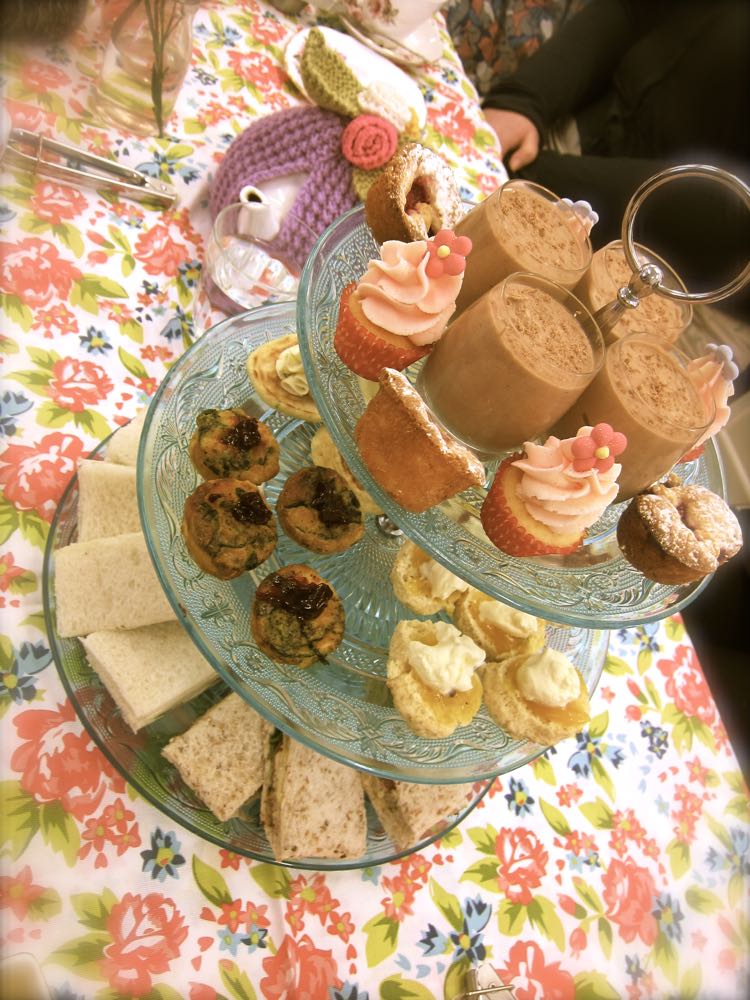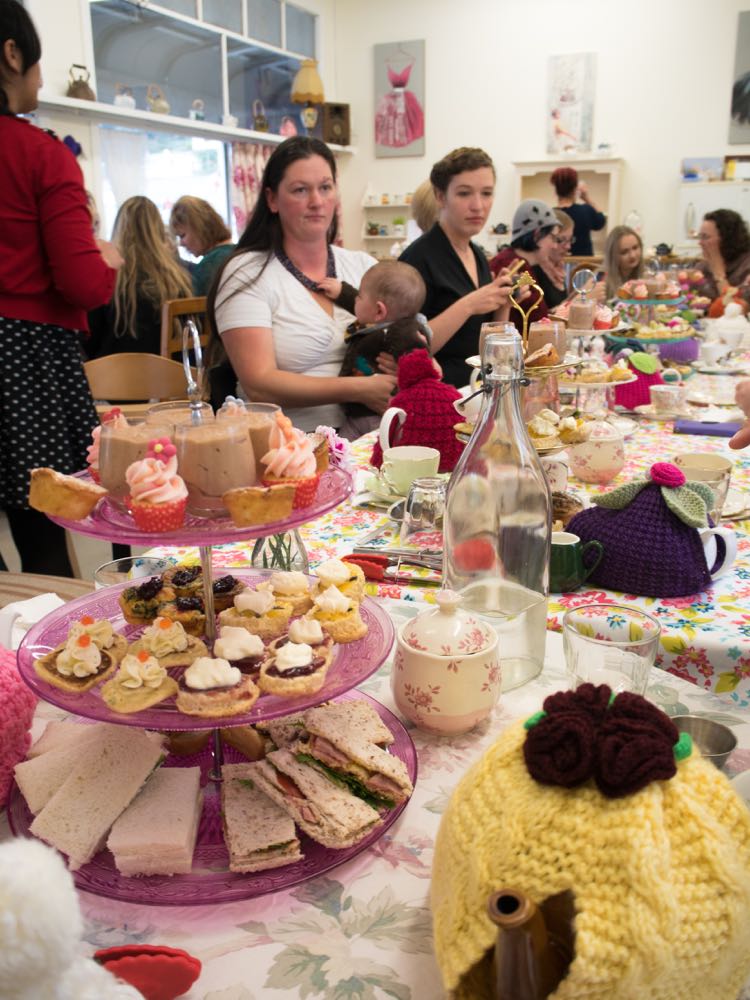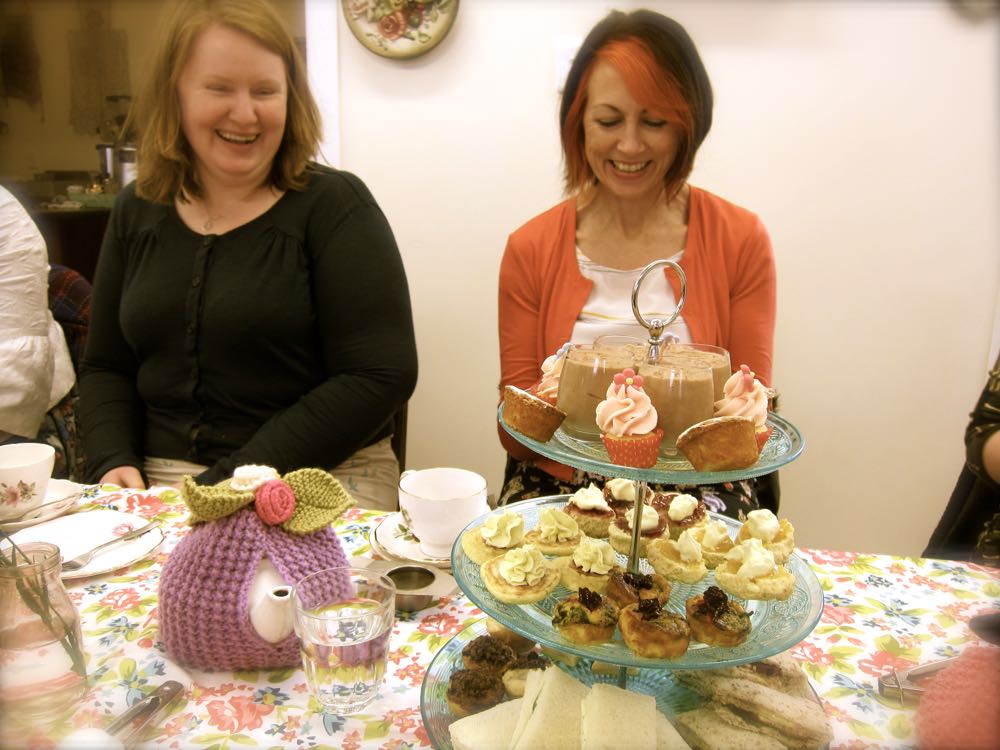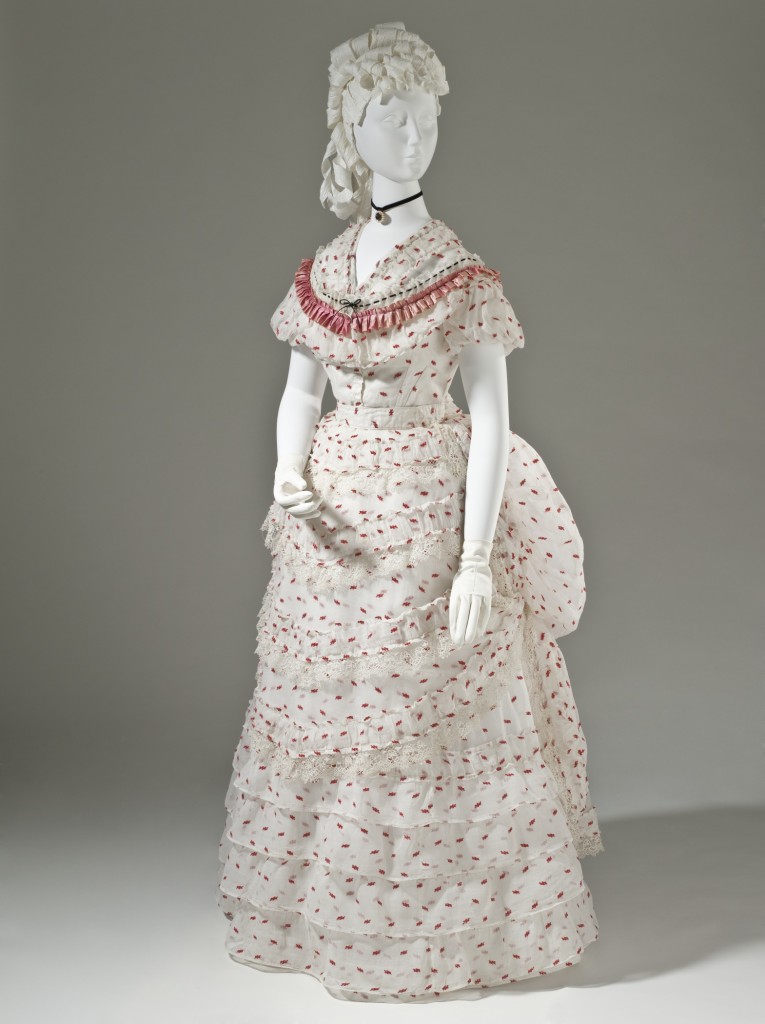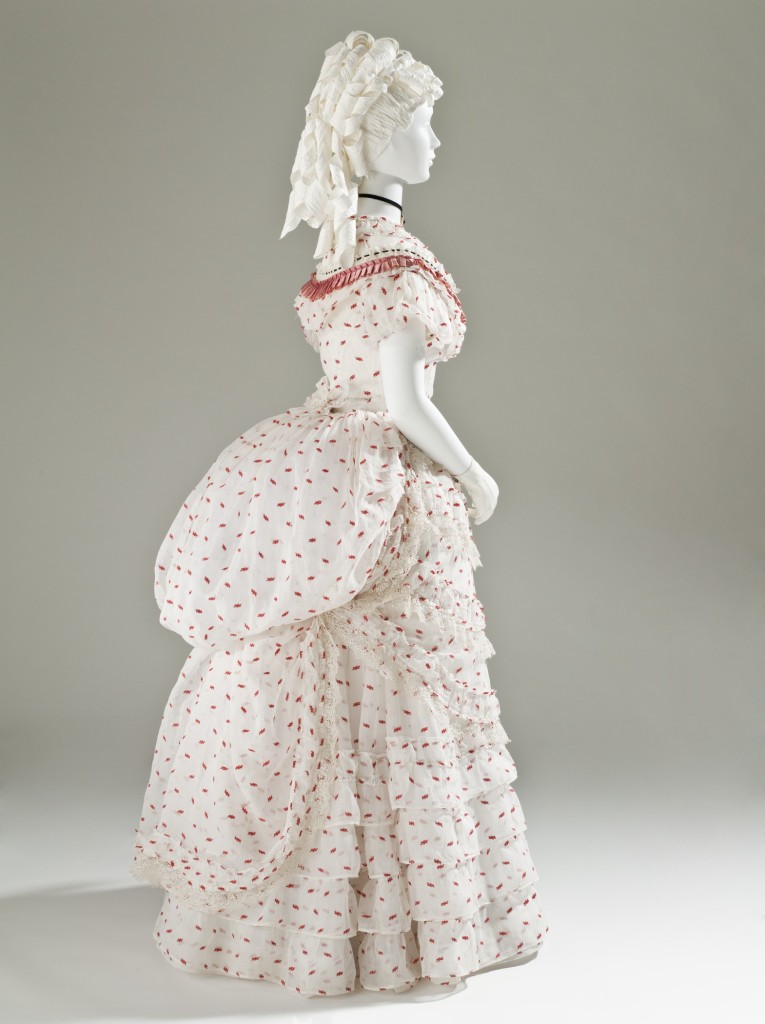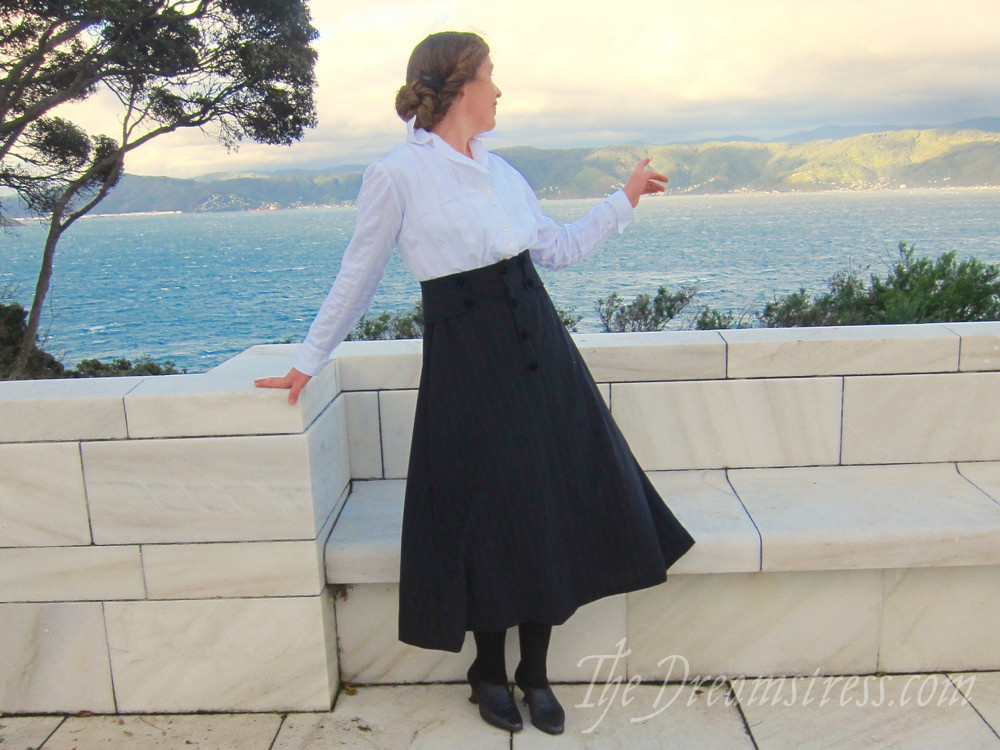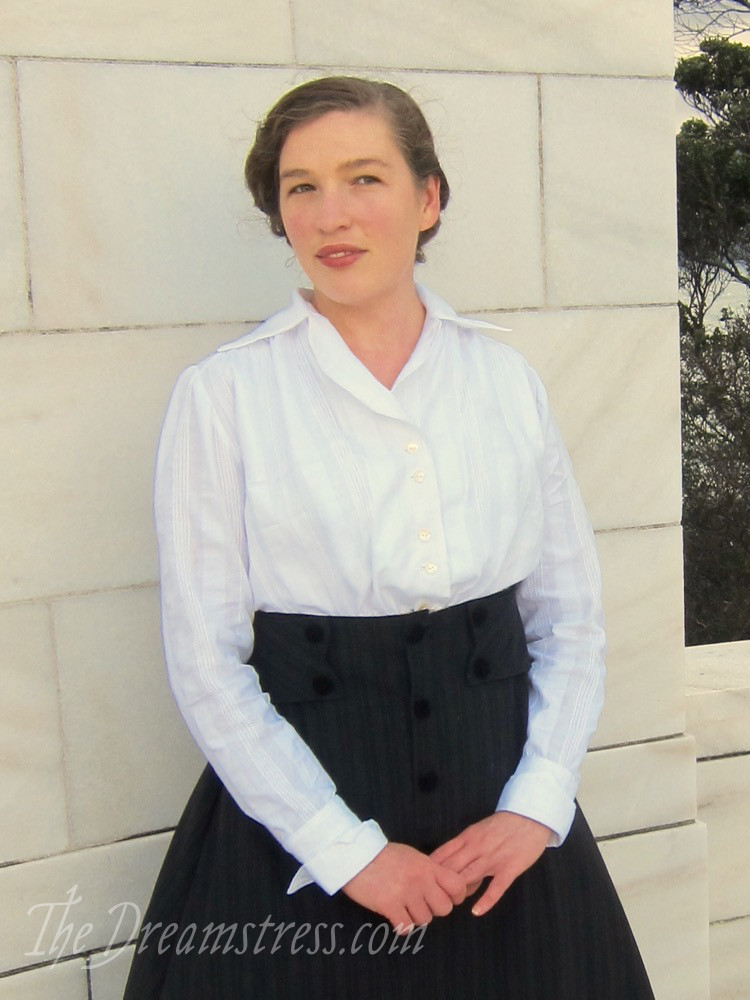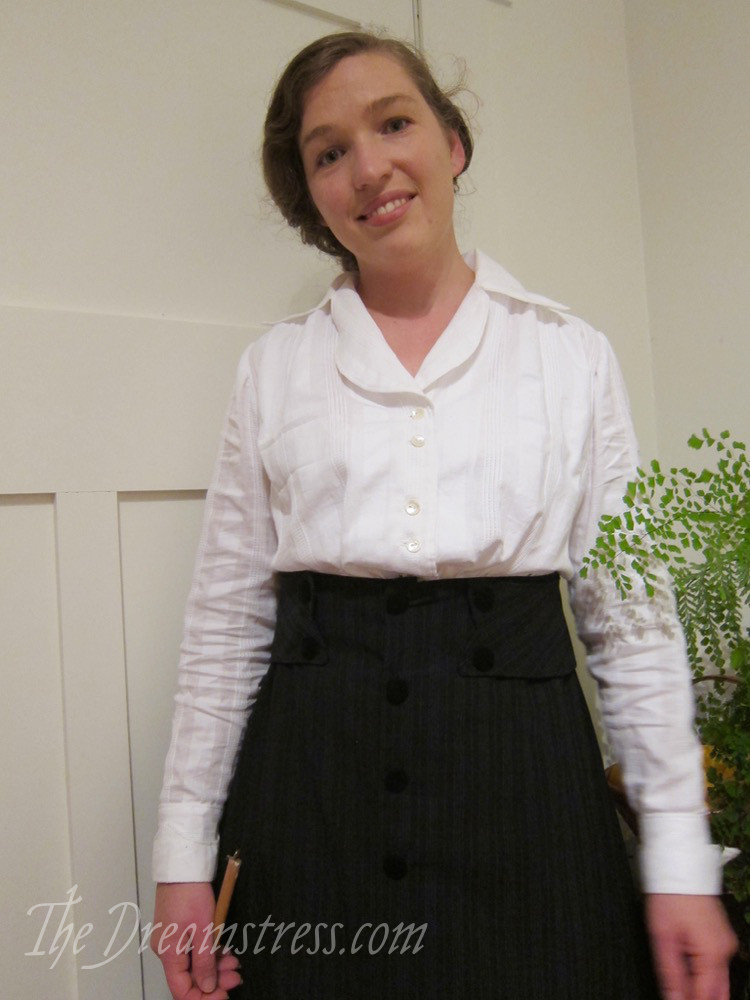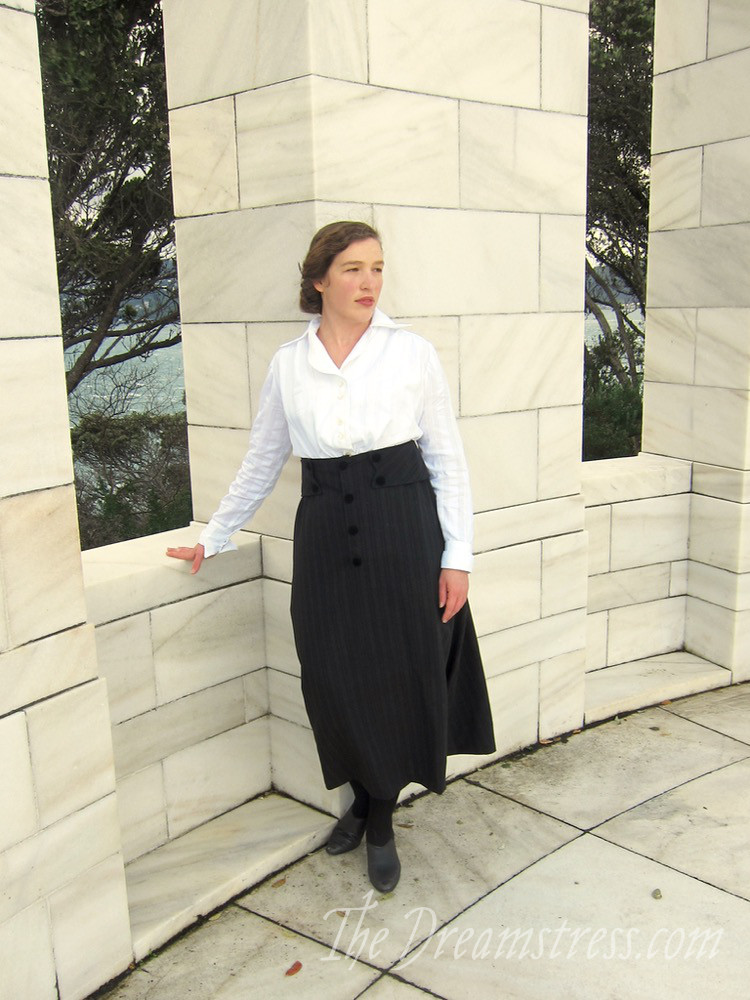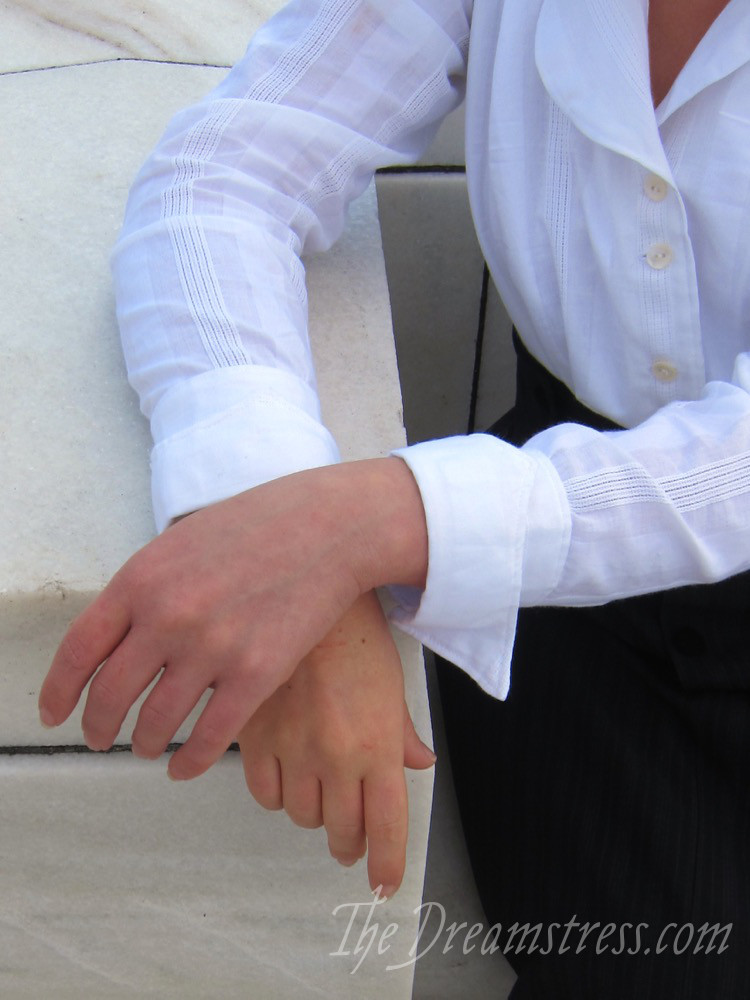The afternoon tea* craze is well established in Wellington, with at least one dedicated afternoon tea shop, and various restaurants doing their own afternoon teas. And a new afternoon tea shop has just opened in Kilbirnie (a suburb/village on the eastern side of Wellington, near Weta Workshops), and I’ve been meaning to try it.
You know who else likes afternoon tea? The Wellington Sewing Bloggers.
We also like fabric shopping, and meeting non-Wellington Sewing Bloggers.
So when Penny from Dresses and Me (OK, only kind-of a sewing blogger, but close enough!) let us know she was coming to Wellington, of course we had to meet her, and take her fabric shopping, and to afternoon tea. And of course I suggested the new tea place so we could try it out.**
But first, to work up an appetite, we went fabric shopping:
(many thanks to Silly Billy Sewing for all the photos in this post that include me)
I completely blew my fabric budget at The Fabric Warehouse, buying silk-merino blend jersey (I’m actually wearing a shirt made out if it*** in the photo above†which I’ll be telling you about soon (the shirt, not the photo††)) to make tops and cardigans and wrap dresses and modern-medieval frocks and more tops and cardigans and out of††, and a heavy merino-lycra jersey, to make leggings out of. So I had to restrain myself at The Fabric Store and not buy anything, which is quite hard when they have beautiful wool plaids on sale!
So it was quite good that we were running late and I had to hop in the car and head out to Kilbirnie before I could be overcome by fabric temptation.
Having withstood fabric temptation, it was quite good to succumb to tea temptation‡ at The Little Teapot, where tea‡‡ is served in individual teapots with adorable hand-knitted tea cozies.
When everyone else arrived we admired the temptation they had succumbed to:
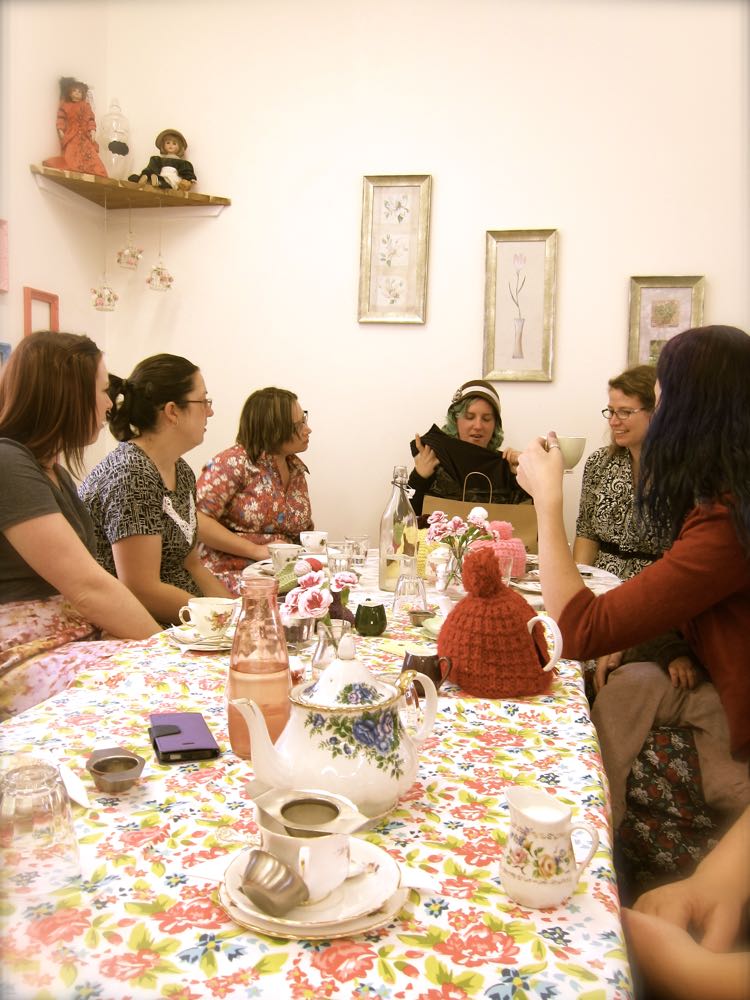 And then we admired the trays of delicious goodies that arrived, stacked with sandwiches and tarts and chocolate mousse.‡‡‡
And then we admired the trays of delicious goodies that arrived, stacked with sandwiches and tarts and chocolate mousse.‡‡‡
As often happens, even in groups where I’ve never met anyone before, all the vegetarians ended up sitting in one area, as our pheromones bring us together.+
So those of us not indulging in the flesh of dead things++ got to admire our cream cheese and cucumber sandwiches without being disturbed by roast beef.
And then we got to devour them+++, because that’s the whole point!
And then I took photos of Sewist Stitch’s Belcarra (the 0Degrees twin to my Sunshine dress), and other bloggers documented their own recent makes, and a wonderful time was had by all.
* As in the kind with little sandwiches and crumpets, not to be mistaken for high tea, which is supper. Even if lots of people call the kind with crumpets high tea.
** Also because it’s out of the CBD, which makes parking only a gazillion times easier.ˆ
ˆ Only, as it turns out, traffic from the CBD to Kilbirnie is such a nightmare that one might as well have attempted to find a park in town for the time it takes to get between them.
*** Indicating that I am either way more of a sewing wizard than anyone has ever given me credit for, or I’d already bought some of it and decided I needed more!
†Despite the fact that silk merino jersey is extremely exciting, I’m not actually THAT excited about it. I just tend to overreact when a camera gets aimed in my direction 😉
††Though technically speaking, since there is a footnote about the shirt, I have already told you more about it, just not as much more as I will be.
†††Probably not quite that many things, but I live in hope that the fabric will never run out!
‡ Where I realised that having left before the people who had succumbed to fabric buying temptation, and thus were still getting fabric cut and being caught in traffic, meant I got to be naughty and rearranged the teacup trios so that I had my favourite.ˆ
ˆ Oh come on, there is no way you wouldn’t haven’t wanted to do that!
‡‡ I went for an English breakfast variant.
‡‡‡ Sadly, no crumpetsˆ
ˆMinor existential crisis. If there are no crumpets, is it still afternoon tea?
+ I can’t decided if saying something about pheromones or something about being psychically attracted is less dumb and creepy.
++ Ahem.
+++ I am happy to report that they were quite devour-able. Definitely the best sandwichesˆ I’ve had at afternoon tea.
ˆBecause if one doesn’t have crumpets, at least one must have sandwiches.

